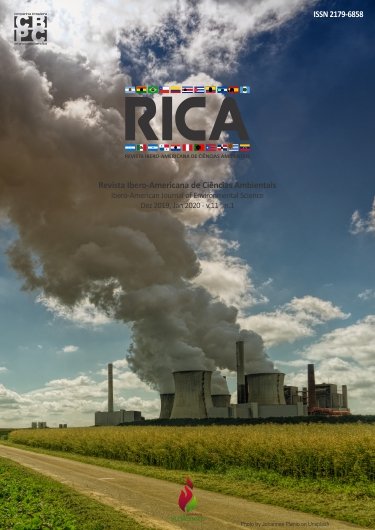Analysis of sediment accumulation by bathymetry in an optional lagoon in the municipality of Campo Mourão/PR
DOI:
https://doi.org/10.6008/CBPC2179-6858.2020.001.0017Keywords:
Bathymetry, Facultative pond, Wastewater treatmentAbstract
Facultative lagoons are used as post-treatment of unstabilized effluents, and they have as mechanism of action an association among different microorganisms located in different profile stages. When not operated efficiently, they can present problems such as dead zones and short circuit zones. Therefore, the objective of this study is to analyze sediment accumulation by bathymetry in a facultative lagoon in the city of Campo Mourão, Brazil. Bathymetric data were collected in an aluminum dinghy, with the aid of a ranging rod attached to an aluminum disc, and the collection points were 5x5 and 10x5 meters (line X point). From the obtained data, diagrams were prepared showing the heights of the sludge in the bed and the three-dimensional representation of sediment accumulation .With these representations, it was noted that the most affected region is the beginning of the lagoon, where the curved margin is located, which directly influences the effluent flow. From this analysis, it was concluded that irregular sedimentation in the facultative lagoon is associated with both its shape that is different from the projected shape, and the entry fluid velocity into the lagoon, which is insufficient to carry the suspended particles throughout the lagoon bed.
Downloads
Downloads
Published
Issue
Section
License
The CBPC - Companhia Brasileira de Produção Científica (Brazil CNPJ: 11.221.422/0001-03) the material rights of the published works. The rights relate to the publication of the work anywhere in the world, including rights to renewals, expansions and dissemination of the contribution, as well as other subsidiary rights. All electronically published works may subsequently be published in printed collections under the coordination of this company and / or its partners. The authors preserve the copyright, but are not allowed to publish the contribution in another medium, printed or digital, in Portuguese or in translation.









